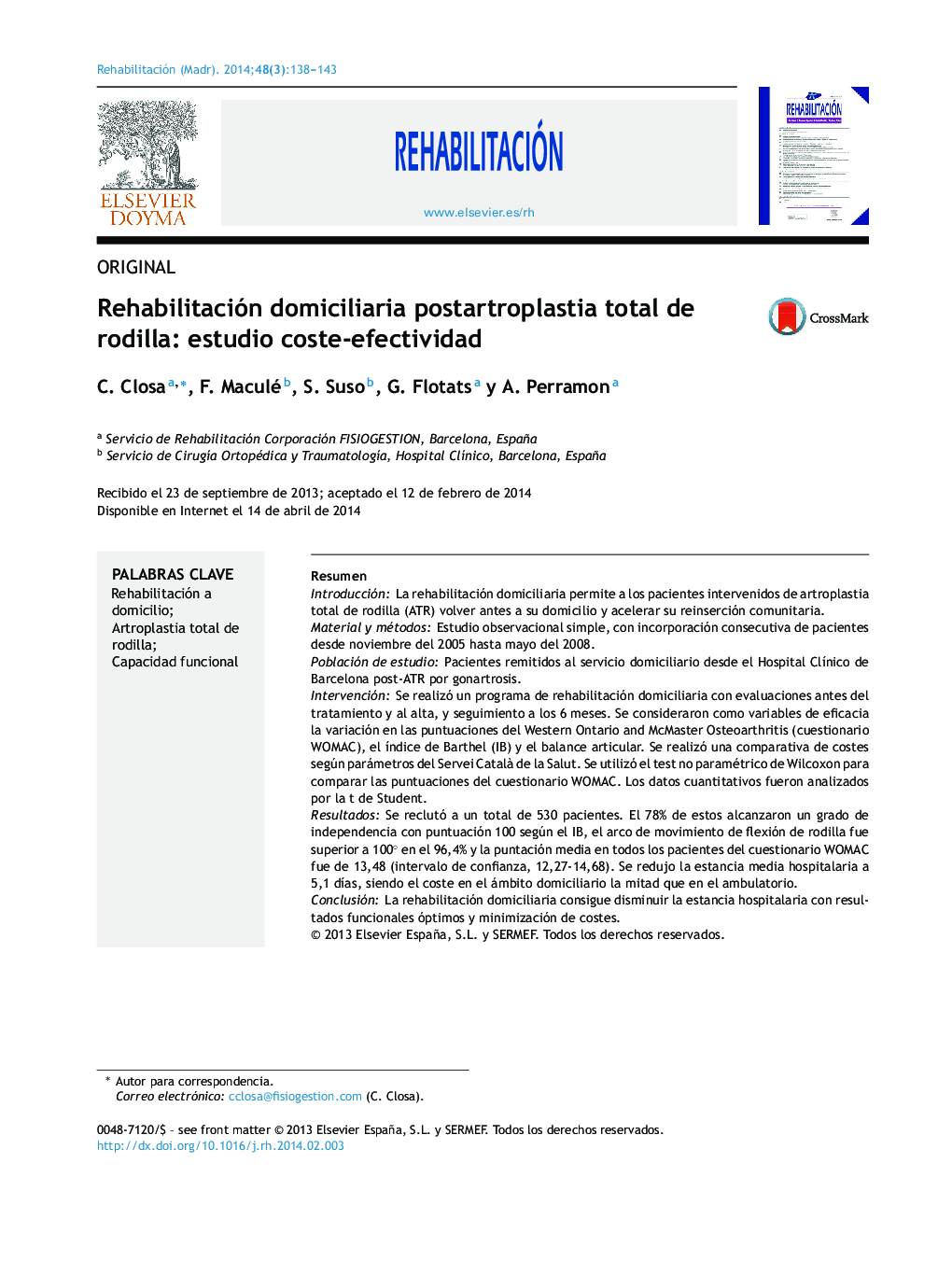| Article ID | Journal | Published Year | Pages | File Type |
|---|---|---|---|---|
| 4084818 | Rehabilitación | 2014 | 6 Pages |
ResumenIntroducciónLa rehabilitación domiciliaria permite a los pacientes intervenidos de artroplastia total de rodilla (ATR) volver antes a su domicilio y acelerar su reinserción comunitaria.Material y métodosEstudio observacional simple, con incorporación consecutiva de pacientes desde noviembre del 2005 hasta mayo del 2008.Población de estudioPacientes remitidos al servicio domiciliario desde el Hospital Clínico de Barcelona post-ATR por gonartrosis.IntervenciónSe realizó un programa de rehabilitación domiciliaria con evaluaciones antes del tratamiento y al alta, y seguimiento a los 6 meses. Se consideraron como variables de eficacia la variación en las puntuaciones del Western Ontario and McMaster Osteoarthritis (cuestionario WOMAC), el índice de Barthel (IB) y el balance articular. Se realizó una comparativa de costes según parámetros del Servei Català de la Salut. Se utilizó el test no paramétrico de Wilcoxon para comparar las puntuaciones del cuestionario WOMAC. Los datos cuantitativos fueron analizados por la t de Student.ResultadosSe reclutó a un total de 530 pacientes. El 78% de estos alcanzaron un grado de independencia con puntuación 100 según el IB, el arco de movimiento de flexión de rodilla fue superior a 100° en el 96,4% y la puntación media en todos los pacientes del cuestionario WOMAC fue de 13,48 (intervalo de confianza, 12,27-14,68). Se redujo la estancia media hospitalaria a 5,1 días, siendo el coste en el ámbito domiciliario la mitad que en el ambulatorio.ConclusiónLa rehabilitación domiciliaria consigue disminuir la estancia hospitalaria con resultados funcionales óptimos y minimización de costes.
IntroductionHome rehabilitation allows an earlier return to home in patients undergoing total knee arthroplasty.Material and methodsWe performed a simple observational study with consecutive enrolment of patients from November 2005 to May 2008.Study populationAdult patients referred to the home-based rehabilitation service of Hospital Clinic in Barcelona after total knee arthroplasty for gonarthrosis.InterventionWe conducted a multidisciplinary home-based rehabilitation program with assessments before treatment, at discharge from rehabilitation and at 6 months follow-up. The outcomes measured were the Western Ontario and McMaster Universities Index (WOMAC), the Barthel Index (BI), and range of motion (ROM) scores. Costs were compared using parameters of the Catalan Health Service. Wilcoxon's non-parametric test was used to analyze WOMAC outcomes. Quantitative data were analyzed using Student's t test.ResultsA total of 530 patients were recruited. Of these, 78% achieved a degree of independence, with a BI score of 100. The ROM for knee flexion was greater than 100° in 96.4% and the average rating of all the patients in the questionnaire WOMAC was 13.48 (CI: 12.27-14.68). The average length of hospital stay was reduced to 5.1 days, and the cost of home rehabilitation was half that in the outpatient setting.ConclusionThe home rehabilitation model reduces length of hospital stay and cost and has optimal functional results.
